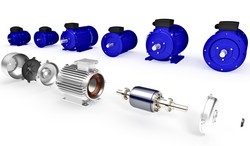Domestic production of greener magnets
The renewable energy market is booming. Its permanent magnets currently rely on light rare earth (LRE) (neodymium) and heavy rare earth (HRE) (dysprosium, terbium) elements, primarily supplied by China, to ensure high-temperature performance. At the same time that demand for these elements is increasing, China is restricting exports to fuel its own burgeoning green energy sector. As the costs of needed materials soar and supply becomes unreliable, the EU-funded project ROMEO (Replacement and original magnet engineering options) was launched to drastically decrease the amount of HRE or/and to find an alternative to rare earth elements in permanent magnets. Scientists worked to improve the properties of permanent magnets based on LRE elements and developed a totally rare earth-free magnet. Improving coercivity or resistance to changes in magnetisation will enable high performance at operating temperatures above 100 °C. The ROMEO consortium combined European excellence and expertise with support from Japan and the United States via an advisory board. Current technologies use about 10-11 wt % of Dy, whereas with the new technique, only 0.6 wt % Dy is effective. This reduction by a factor of 16 represents a dramatic decrease in cost of the manufactured magnets, which can be estimated to roughly 40 % based on the raw material costs in 2015. Besides, the coercivity of HRE-totally free magnets has been significantly increased compared to previous results. Scientists also investigated the best compromise between mechanical and magnetic properties. Simulations and high-throughput screening methods to evaluate electronic structures and magnetic properties have shed light on possible candidate materials for new permanent magnets. Numerous investigations of formulations and powder processing techniques have delivered promising results. Nine new rare earth-free magnetic materials have been selected for experimental studies from the high-throughput screening process. The team assessed manufacturing strategies focusing on eco-efficient production. Topics considered were sintering and metal forming, production of polymer-bonded magnets, net-shape processing and recycling. ROMEO undertook a critical task: development of rare earth element-free materials for permanent magnets required by electric vehicles and wind turbines. The independent supply of sustainable materials and more eco-friendly manufacturing technologies will help the EU take advantage of the global renewable energy market.
Keywords
Permanent magnets, renewable energy, rare earth elements, coercivity



